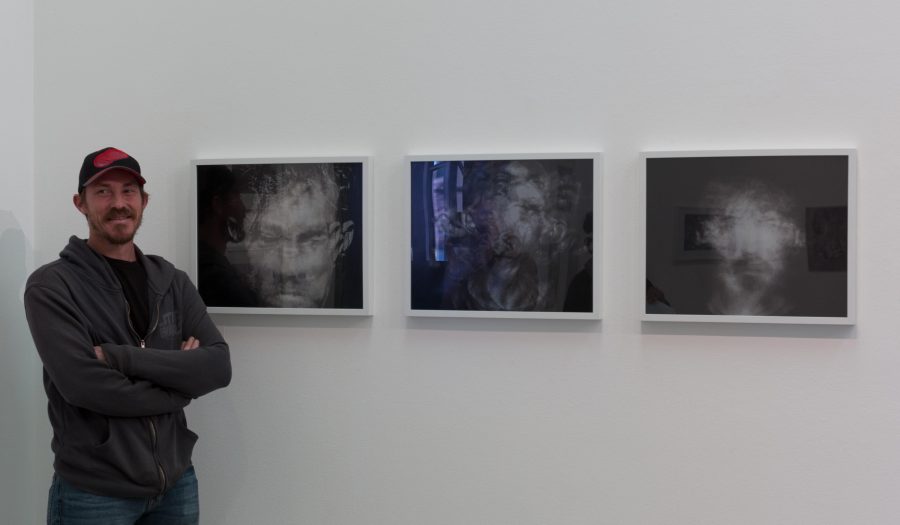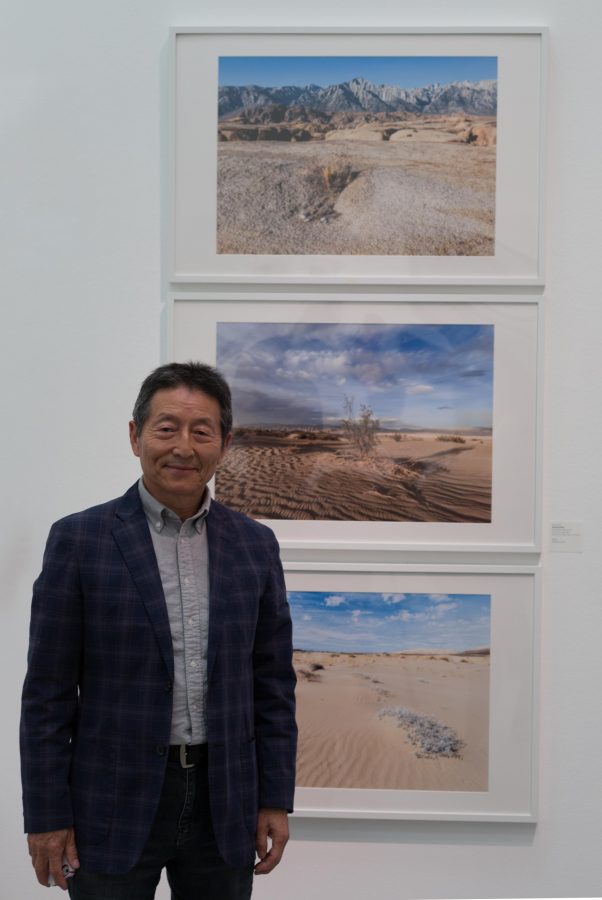Art Exhibit Showcases Talent and Emotions
Glendale College’s advanced photography students displays their work in “Art Through the Lens.” Photo Credit: Liza Brozek Boyer
Art is not just about water colors or prints, but also can be captured through a lens. Photography students at GCC displayed their photos in January and February. This amalgamation of stills offered a new perspective on LA culture, landscape, and even how we view emotions within ourselves.
I sat down with three of the photographers and curator of the event in order to gain an inside look at what their inspirations were, what emotions they wanted to evoke from their pieces, and what about this form of art gives them the opportunity to express themselves.
Melissa Waterman – Electrical Beauties
What was your inspiration for your pieces?
At first, I wanted to do something that involved depression or anxiety, but my other concept would have taken too long and I would not make the deadlines for the class. So when I saw the electrical boxes, the concept came to me. In my artist statement, I assert that my intent was to compose my subjects in a portrait from displaying beauty physically while illuminating a mood within a moment. Basically, on the outside, these electrical boxes are so beautiful and creative, but on the inside so much is going on, like the human brain. There are wires connecting to each other and certain outlets do a specific job. People seem to forget that these are intricate objects that help us with our daily lives.
What got you into photography?
The process. The whole going into a darkroom and looking at the negatives and putting them in the solution. I love every second of it. It brings out my creative side. It is my creative outlet when life gets hard or too demanding. Also, having control of 100 percent of the whole process. I know how my project is going to come out because I am watching every step to completion.
What kind of reaction did you expect the viewer to have to your piece?
I knew people were going to be a little unaware of the message, but I think as long as they understood the composition and that art can be found in unknown places that is all that matters to me.
Nathan Milisavlijevich – Terror of Knowing, Let me out, Like a Blind Man
What emotions were you trying to evoke from this piece?
I was trying to get the viewers to see that people have these emotions inside of them. When you look at people, you only see what is lying at the surface. You do not see what is really going on emotionally in each human being. Everyone experiences these emotions and I think it is important to show empathy for people struggling with these emotions. The last piece expresses a cathartic release from these emotions and how people can escape from themselves.
Are these pieces from personal experience or watching people in your own life?
It is mostly personal experience. I can only speak from a personal vantage point when presenting something like this. I do want to look into maybe doing something along these lines regarding different kinds of people. It was just that I have been feeling these emotions for some time now and it was important for me to show my classmates and potential viewers that people are not happy all the time. Negative emotions occur, but how we process these emotions is what makes who we are.
What interests you about photography?
The freezing of transient moments. Before I settled here in Glendale, I was a sound engineer on tour with Sara Bareilles. It was stressful. I had make sure everything was done right the first time and no mistakes. In turn, I turned to photography to sort of keep the stress at bay. I would just take pictures and keep memories with me all the time. It was important to me to slow down a little bit and to just think. I think photography allowed me to do that and I am greatly appreciative of that.
Roger Lai – White Point 1,2,3,
What inspired you to take these intricate photographs?
The rocks, the fog, and the water all represent veterans in our society. The rocks represent the veterans themselves and how they are told to be strong and rigid. The fog represents the depression that goes with being in the military. Finally, the water represents the wear and tear of the rocks as time passes on. It also represents depression and PTSD common side effects of participating in the military. I want viewers to understand that there is a sense of pride involved with being in military, but there are also some extremely negative aspects of this profession that people are not aware of. I wanted to express that in this piece and bring my own personal feelings into it.
How did you get involved with photography?
I used to shoot food. It was interesting for a while, but after some time I did not like it that much. I decided that landscapes interested me more and I used the tools from the class and other classes that I have taken in order to shoot these subjects correctly. It was important to me to tell this story and in learning from my professors I was able to capture these stills.
How has the class influenced your photography?
This class was a close-knit community and we would go every week to critique each other’s work. It was also great to have Amy Oliver there to help us and provide us with ideas to make our projects better. I was able to gain skills in photography that helped me bring this project into fruition.
Amy Oliver – Curator of the Event-Professor of Class
How did you push your students to the projects that are displayed?
Support. It was important for me to provide support to each of one of my students in each project. This included critiquing their work, but also providing them with resources and examples of other artists with similar interests. It was great to see the progression of each student’s work and to see how each of them grew as an artist. I also made sure to show them what it is like to be a professional artist. I had them go to galleries, write a resume, write an artist statement, and present their ideas to potential art gallery curators. It was such a great experience to watch all of this happen.
What do you think of the final result and how people reacted to the pieces in the gallery?
I am extremely proud of the results that came from the class. These students worked really hard and deserve to be recognized. At the gallery, it was awe-inspiring to see everyone looking and asking questions about the student’s work. I had one person come up to me about Nathan’s work and she was asking me questions about it. In the middle of the conversation, I said Nathan is right over there, why don’t you go talk to him? He would love to answer these questions that you have. This is what art does. It allows people to come together as a community and build connections. That is what I love about this art form.
Nicholas Martinez is someone who has always been interested in asking questions and exploring the world. He is passionate about LGBTQ culture, travel,...


